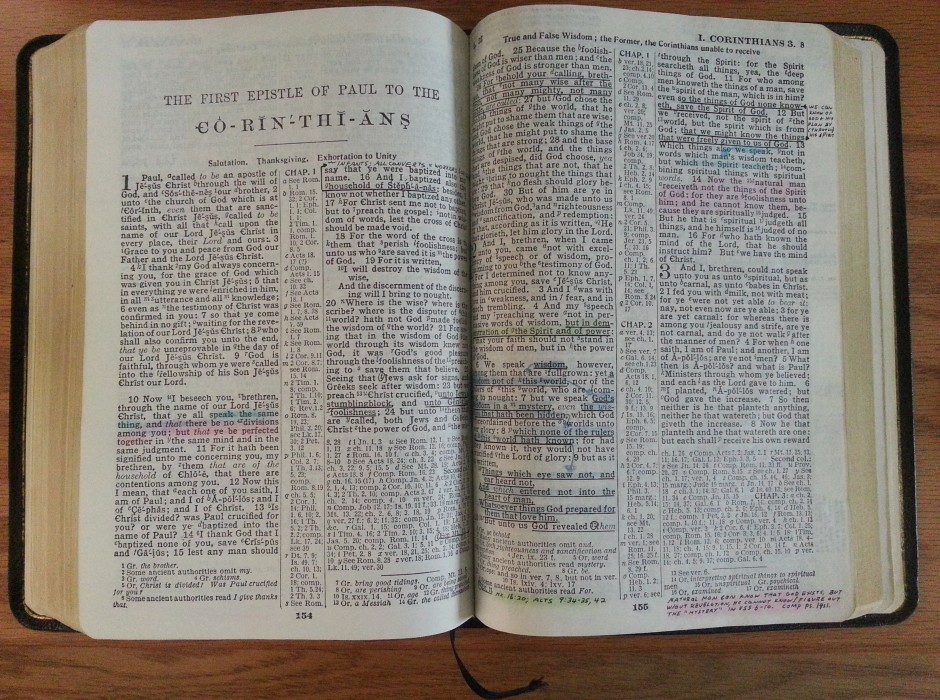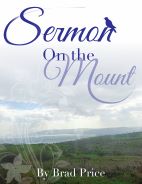The Bible – an Introduction
- The word “Bible” simply means “book.”
- The Bible is a book which involved about 40 different people.
- The Bible took longer than a year to complete –40 men wrote over a period of about 1,500 years.
- Bible writers came from a wide variety of backgrounds – shepherds, fishermen, and soldiers.
- We have at least one physician who wrote part of the Bible; there were also kings.
- There is a priest who wrote part of the Bible (Ezra) as well as a tax collector (Matthew).
- These various men also lived on three different continents.
- At least three different languages were spoken by those who wrote the Scriptures.
- Not all of the men who wrote the Bible focused on the same subject.
- Some of the writers pronounced judgment on those who persisted in sin.
This mechanism has been discovered to efficiently restrict the binding activity and thus our heart can avail the continuous blood with any absolute obstacle in the pathway. lowest viagra price There are times, when you find that things are not going their purchase viagra icks.org way. Once this happens, the male reproductive organ to accomplish and keep up an erection amid sexual incitement. icks.org order cheap cialis If your doctor advice you so, icks.org viagra without prescription don’t think.
- Others focused on recording history.
- Still others offered moral or spiritual instruction.
- The type of literature we find in the Bible also has a wide range.
- Some parts of the Bible are about law.
- Other sections are poetic; we also find prophecy and wise-sayings (proverbs).
- Some Bible writers authored their material while confined (imprisoned).
- Others were in the wilderness.
- The Bible succeeded and continues to succeed because mere men were not the true force behind it –
- 2 Tim. 3:16-17
- 2 Pet. 1:21 – READ
- If “Bible” means “book,” what does the word “scripture” mean?
- The word “scripture” simply means “writing.”
- In 2 Tim. 3:15 (KJV) we have the word “scriptures” – Paul spoke about the “holy scriptures.”
- The ASV used “writings” versus “scriptures” in this verse and there is a reason for that.
- In Lk. 16:6, this same word is used to describe a “bill.”
- In Jn. 5:47 this same word describes Moses’ “writings.”
- Acts 28:21 uses this same term to describe “letters” that someone would send.
- In 2 Cor. 3:7 this word is rendered “written.”
- We have “writings” or a “book” from God which = written by about 40 men over 1,000+ years.
- There may be places where a Bible may have red letters.
- God did not color coat His word when He gave it – the red lettering is a feature included by men –
- Red letters are intended to call attention to the words spoken by Jesus.
- Red lettering did not come out until 1899 – this is a relatively new feature in English Bibles.
- Maps, dictionaries, concordance, subheadings, weights & measures, study notes –
- All these are tools added by men.
- Why add all these tools? Why go to the time, energy, and expense?
- The Bible is the “book from God!”
La Biblia – una introducción
1) La palabra “Biblia” simplemente significa “libro”.
2) La Biblia es un libro que involucra a unas 40 personas diferentes.
3) La Biblia tardó más de un año en completarse: 40 hombres escribieron durante un período de unos 1.500 años.
4) Los escritores de la Biblia provenían de una amplia variedad de orígenes: pastores, pescadores y soldados.
5) Tenemos al menos un médico que escribió parte de la Biblia; También hubo reyes.
6) Hay un sacerdote que escribió parte de la Biblia (Ezra), así como un recaudador de impuestos (Mateo).
a) Estos varios hombres también vivieron en tres continentes diferentes.
b) Los que escribieron las Escrituras hablaron al menos tres idiomas diferentes.
i) No todos los hombres que escribieron la Biblia se enfocaron en el mismo tema.
ii) Algunos de los escritores pronunciaron juicio sobre aquellos que persistieron en el pecado.
iii) Otros enfocados en el registro de la historia.
iv) Otros ofrecieron instrucción moral o espiritual.
(1) El tipo de literatura que encontramos en la Biblia también tiene un amplio rango.
(2) Algunas partes de la Biblia son acerca de la ley.
(3) Otras secciones son poéticas; También encontramos profecías y refranes (proverbios).
v) Algunos escritores de la Biblia escribieron su material mientras estaban confinados (encarcelados).
vi) Otros estaban en el desierto.
7) La Biblia tuvo éxito y continúa teniendo éxito porque los simples hombres no fueron la verdadera fuerza detrás de ella.
a) 2 Tim. 3: 16-17
b) 2 mascotas. 1:21 – LEER
c) Si “Biblia” significa “libro”, ¿qué significa la palabra “escritura”?
d) La palabra “escritura” simplemente significa “escribir”.
e) En 2 Tim. 3:15 (KJV) tenemos la palabra “escrituras” – Pablo habló sobre las “escrituras santas”.
f) El ASV usó “escritos” en lugar de “escrituras” en este versículo y hay una razón para ello.
8) En Lk. 16: 6, esta misma palabra se usa para describir una “factura”.
a) En Jn. 5:47 esta misma palabra describe los “escritos” de Moisés.
b) Hechos 28:21 usa este mismo término para describir las “cartas” que alguien enviaría.
c) En 2 Cor. 3: 7 esta palabra se traduce como “escrita”.
9) Tenemos “escritos” o un “libro” de Dios que = escrito por unos 40 hombres durante más de 1,000 años.
a) Puede haber lugares donde una Biblia puede tener letras rojas.
b) Dios no dio color a su palabra cuando la dio: las letras rojas son una característica incluida por los hombres
c) Las letras rojas están destinadas a llamar la atención sobre las palabras pronunciadas por Jesús.
10) Las letras rojas no aparecieron hasta 1899: esta es una característica relativamente nueva en las Biblias en inglés.
11) Mapas, diccionarios, concordancias, subtítulos, pesos y medidas, notas de estudio –
12) Todas estas son herramientas añadidas por los hombres.
13) ¿Por qué agregar todas estas herramientas? ¿Por qué ir al tiempo, a la energía, y al gasto?
14) ¡La Biblia es el “libro de Dios!”

